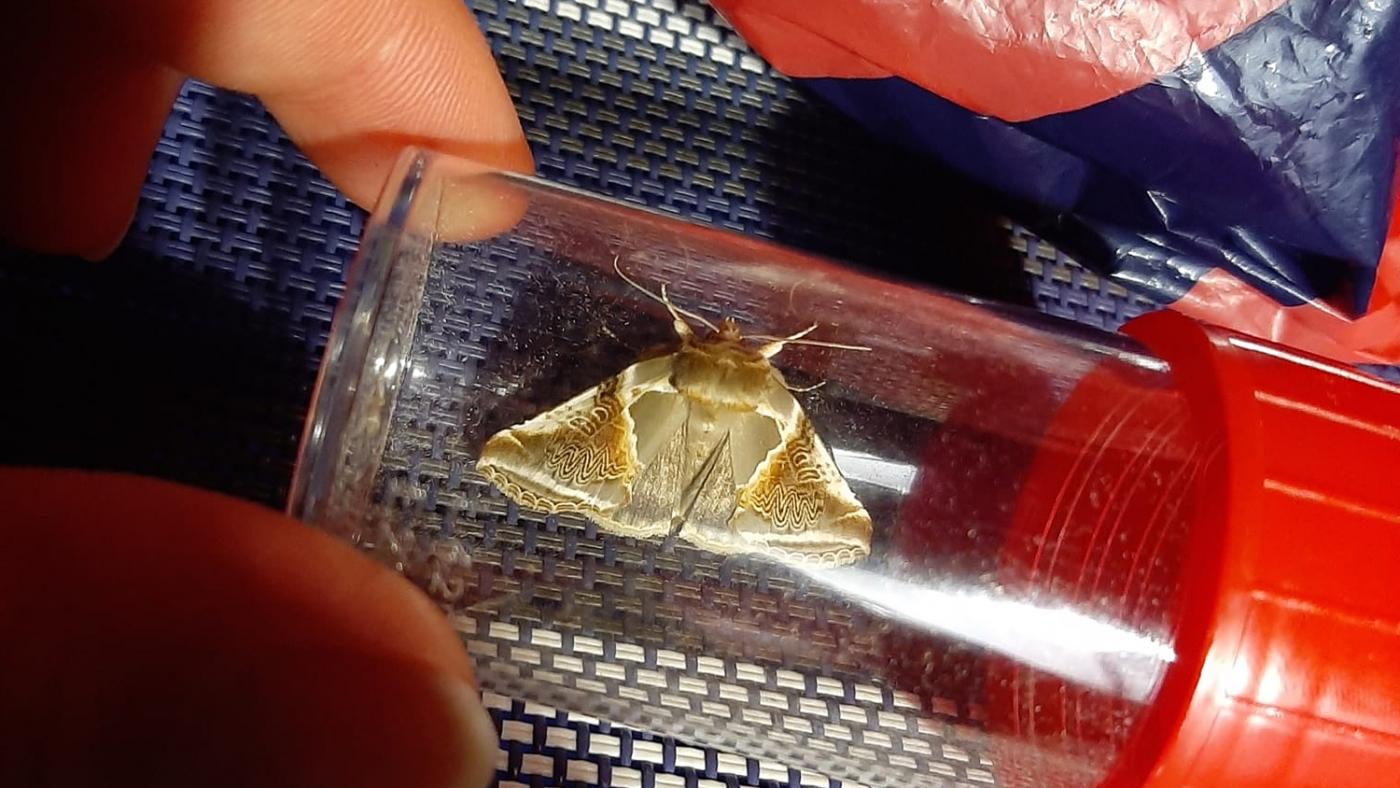Unique research
Biology students catch moths at the Science Park in the dead of night

“We caught 695 moths in total and we were able to distinguish 129 different sorts,” Janneke den Hollander says proudly. They caught the moths in the small nature reserve called De Driehoek (The Triangle, Ed.) located on Cambridgelaan Avenue, at the Utrecht Science Park. Even under the guidance of teacher Jelle Zandveld, luring the moths turned out to be quite the challenge: “We screamed sometimes because they were circling around our head and many butterflies are pretty big. The white sheet attracted them. We caught the ones that landed on the sheet and then put them in jars.”

The Biology students Lianne and Janneke
The two students say the first two nights went according to plan but the third night, not so much. Fewer moths were drawn towards the illuminated canvas because of a supermoon. “We had to catch moths from 10:00 pm until 5:00 am, so that was the longest night. Even so, we caught less than half of the butterflies we caught in one of the two previous nights.”
After a long night catching moths, they continued the research in the lab. The butterflies were anaesthetised and weighed on small scales. Each part was measured separately, even the wings. After that, the moths were released again, something the students find very important. Most of them went back to De Driehoek, except the ones who woke up too early from the anaesthetic. “They are still flying around somewhere in the building”, Lianne Boegheim laughs.

Conducting research in the lab.
Unique research
This type of research is rather unique, according to the students. Not only have they examined how many different kinds of moths there are in the little nature reserve but they also tried to prove the hypothesis that moths gain body weight during the night. According to Zandveld, who teaches the course Evolution 3, this is something completely new in butterfly research.
Thanks to the measurements, the students were able to prove that moths do gain weight during the night. This happens because, at the beginning of the night, moths have to escape predators like bats and birds who only hunt early in the evening. The smaller the moth, the easier it can evade the hunters. Later in the night, predators are less of an issue. “At twilight, it's better for them to be smaller which explains why they grow bigger as the night progresses. It was amazing to see that our hypothesis was right,” Lianne Boegheim says.

A poplar pintail
Less revolutionary but still interesting is the fact that the area is surprisingly biodiverse, with 129 different types of moths. That's because there are herbs in the area that are particularly attractive to moths. These herbs do not exist in meadows, for example.
Although research into colourful butterflies who fly during the day is more popular, the students also saw beauty in the moths that fly at night. Many moths look rather plain but some of them were quite special, with colours like green, bright yellow, or black with white spots. According to teacher Zandveld, researching night-time moths is actually more interesting than studying day-time butterflies. “Night-time moths have to deal with many predators,” he explains. no wonder he thinks this research is worth repeating. “We like the idea of doing this every year in this area, especially since the project was so successful and the students are so committed.”